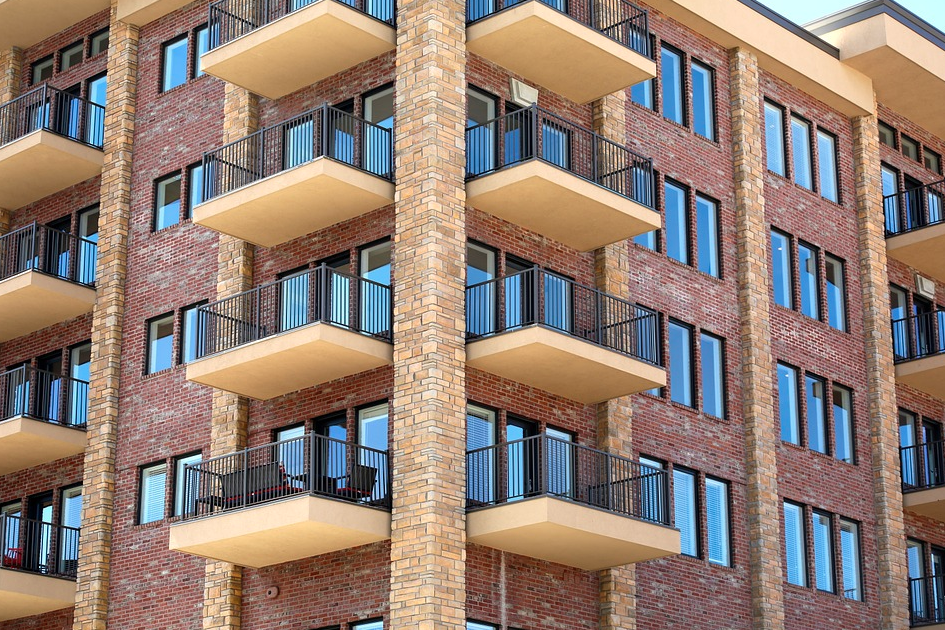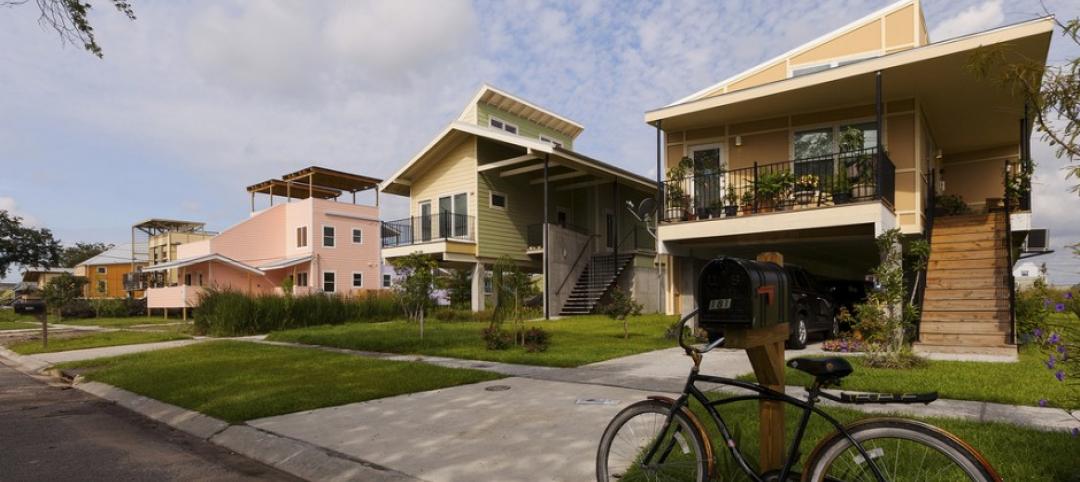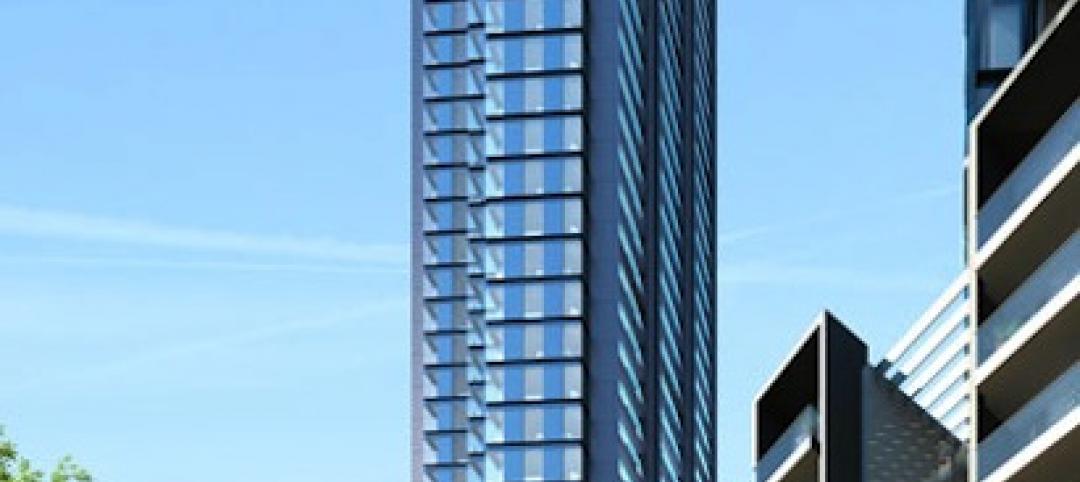We asked four veteran acoustics experts how best to sound- proof apartment and condo projects. Here’s what they told us.
1. Take acoustic privacy seriously. Noise complaints can end up in court. Make sure your project team pays careful attention to acoustics throughout design and construction. Developers should be engaged on how to improve acoustics at the design stage, so that they can provide accurate information to estimators. Good acoustics and noise control suggests a higher level of construction quality to the renter or condo buyer, said ACENTECH’s Ben Markham. This could have a positive effect on the perceived marketable value of the property.
2. Avoid noise problems in schematic designs. It’s import- ant to consider acoustics in the early stages of design when many potential problems—and remedial expense—can be avoided. Don’t put spaces that produce loud noises next to living units. Don’t put a fitness room next above apartments. Your tenants don’t want to hear the sound of pounding feet from a Zumba class.
3. Take your target market into account. Those who purchase or rent luxury properties expect superior acoustic privacy. Plan to spend more to accommodate their expectations. For market-rate and low-income units, more economical solutions may be adequate, provided that acoustic standards are followed in design and adhered to in construction. Affordable housing must meet acous- tic performance requirements set by the International Building Code, said Felicia Doggett, INCE Bd. Cert., Metropolitan Acoustics: for air- borne sound transmission, an STC (sound transmission class) of not less than 45 (field tested) under ASTM E 90 and 45 STC (under ASTM E 492) for structure-borne sound.
See Also: Say 'Hello' to erudite machines
4. Understand the impact of background sound levels. Background sounds created by moving vehicles or air flow from HVAC fans can sometimes mask noise from televisions or stereos being played at reasonable volume in adjoining units. On the other hand, a quiet location in a semi-rural area may offer little noise masking, in which case you may need a more robust sound iso- lation plan.
5. Isolate loud, low-pitched sounds. If your project is near a rail line, highway, or airport, you’ll need to beef up your acous- tics. Loud, low-frequency noises such as the rumble of trains, airplanes, and truck engine brakes are the most difficult to muffle. More mass, such as a concrete masonry wall, can provide a pretty good acoustic barrier, but it is better to construct multi-layer walls with deep cavities filled with sound-absorbing insulation. Windows and glazing should have multiple layers to reduce low-frequency noise intrusion. Interior storm windows, with a deep air gap between the inner storm window and the exterior thermal window, can bring the window system closer to the noise-reduction performance level of the wall itself, said AECOM’s Mark Storm, INCE Bd. Cert.
6. Be aware that building to code may not be good enough. Building codes offer little in the way of acoustic privacy. From an acoustics standpoint, our expert panelists agreed, building to code is like getting a D on a test. Don’t rely on conformance to codes alone to achieve acceptable acoustic performance.
7. Don’t overbuild. If you’re not up to speed on acoustic priva- 7|cy, you might be tempted to over-design and over-spend on acoustics. Many new products are being marketed as having acoustic damping qualities, but if you don’t fully understand how the product is meant to be used, you may end up using a pricier product than necessary to meet your soundproofing needs.
8. Consider having an acoustic expert perform a sound sim- ulation. This applies if you have a project with a high degree of fenestration near a major noise source such as a mass transit line. An acoustic specialist can simulate the indoor acoustic environ- ment based on multiple window options. Since the highest-perform- ing acoustic fenestration can cost four times that of standard prod- ucts, this simulation will help you choose the most economical option.
9. Consider hiring an acoustic consultant in certain situa- tions. This applies when you are planning to use a construc- tion type, floor/ceiling assembly, or mechanical system that you’re not 100% familiar with. An acoustic expert who knows those systems can save you a lot of time and money by helping you avoid remedial soundproofing.
10. Know your options on interior wall design. The most basic interior wall assembly consists of drywall at- tached to both sides of a single set of studs. Resilient channels (Z-shaped metal strips), when installed properly between the sheetrock and studs, act as shock absorbers for sound waves. These are fairly effective and economic solutions when combined with sound-absorbing insulation. Unfortunately, incorrect installa- tion that degrades resilient channel performance is all too common.
When using this option, you need to have on-site inspection by someone who is well versed in its proper installation. Resilient chan- nels are not effective when plywood must be placed between drywall and studs as a shear panel. Sandwiching a resilient channel between a plywood shear panel and a sheet of gypsum board on a wall assem- bly is a big no-no, according to our experts.
A common design for more robust acoustic performance is to use a double wall with two rows of studs separated by an inch or so of sound-absorbing insulation in the void. This arrangement takes up more space and costs more, but is much more effective at reducing noise between units. Very high-end projects might separate the frame assemblies with a layer of masonry for additional sound privacy.
In addition, a wide range of new resilient elements and sound-damp- ing products is now available. These include resilient clips, laminated drywall, and damping compounds, all of which reduce the transmis- sion through layers of sheathing.
11. Understand floor/ceiling acoustic principles. Floor/ ceiling assemblies must isolate sounds from within units, but have the added responsibility to muffle footsteps to the space below. Footsteps create impact vibrations, which can be more difficult to isolate than even most airborne sounds.
The typical treatment employs an underlayment of material that can absorb vibrations from footfalls—usually rubber, cork, or fiber- glass—placed under the top layer of flooring. A key point to remem- ber is that the type of flooring used requires a specific type of under- layment. Footsteps create different sounds on vinyl, tile, and wood. Matching the material with the optimal underlayment is critical. Con- sult the manufacturer’s recommendations.
Different types of buildings—cast-in-place concrete towers, steel- framed mid-rises, and wood-framed four-story apartment build- ings—have very different floor/ceiling assemblies but all need some kind of material that can absorb the vibrations of pattering feet.
12. Be sure to seal all gaps. The same kinds of sealants that provide thermal insulation and vapor and smoke barriers between spaces also improve acoustic isola- tion. Any small cracks or holes that are not sealed act as channels that transmit sound. This problem can be especially acute in projects that convert very old buildings to residential units, where the original flooring has shrunk over the years due to moisture loss, leaving huge gaps between the boards. Acousticians often specify more flexible, non-hardening sealants to close the gaps between the edges of an interior wall and another room surface, said AECOM’s Storm.
13. Minimize noise from mechanical and electrical sys- tems. HVAC manufacturers test their systems for noise, thus providing data that acousticians use to develop appropriate noise-control and sound-abatement measures. Ideally, mechanical equipment selected should operate at the point of highest efficiency: a fan should operate at or close to its most aero- dynamically efficient point. Low efficiency means the fan’s blades are spinning but less work is realized, which means more turbulence that produces unnecessary noise. The same goes for pumps and compres- sors. Try to select mechanical equipment so that it normally runs on lower speeds, unless higher speeds move the blade passage frequency into a range that’s easier to abate with acoustical absorption.
Related Stories
| May 30, 2013
The Make It Right squabble: ‘How many trees did you plant today?’
A debate has been raging in the blogosphere over the last few months about an article in The New Republic, “If You Build It, They Might Not Come,” in which staff writer Lydia DePillis took Brad Pitt’s Make It Right Foundation to task for botching its effort to revitalize the Lower Ninth Ward of New Orleans.
| May 21, 2013
Foster + Partners reveals plans for London residential towers
British firm Foster + Partners has unveiled plans for two residential skyscrapers as part of a mixed-use development in north London.
| May 21, 2013
7 tile trends for 2013: Touch-sensitive glazes, metallic tones among top styles
Tile of Spain consultant and ceramic tile expert Ryan Fasan presented his "What's Trending in Tile" roundup at the Coverings 2013 show in Atlanta earlier this month. Here's an overview of Fasan's emerging tile trends for 2013.
| May 20, 2013
Jones Lang LaSalle: All U.S. real estate sectors to post gains in 2013—even retail
With healthier job growth numbers and construction volumes at near-historic lows, real estate experts at Jones Lang LaSalle see a rosy year for U.S. commercial construction.
| May 7, 2013
First look: Adrian Smith + Gordon Gill skyscraper designed to 'confuse the wind'
The 400-meter-high, 116-story Imperial Tower in Mumbai will feature a slender, rounded form optimized to withstand the area's strong wind currents.
| May 6, 2013
7 major multifamily residential projects in the works
A $140 million redevelopment of a landmark, 45-building apartment complex in Los Angeles is among the nation's significant multifamily developments under way.
| Apr 30, 2013
Tips for designing with fire rated glass - AIA/CES course
Kate Steel of Steel Consulting Services offers tips and advice for choosing the correct code-compliant glazing product for every fire-rated application. This BD+C University class is worth 1.0 AIA LU/HSW.
| Apr 26, 2013
BIG tapped to design Europa City in suburban Paris
Danish architecture firm, BIG - led by Bjarke Ingels – has been announced as the winner of an international invited competition for the design of Europa City, a 800,000 square meter cultural, recreational and retail development in Triangle de Gonesse, France.
| Apr 24, 2013
Los Angeles may add cool roofs to its building code
Los Angeles Mayor Antonio Villaraigosa wants cool roofs added to the city’s building code. He is also asking the Department of Water and Power (LADWP) to create incentives that make it financially attractive for homeowners to install cool roofs.
















